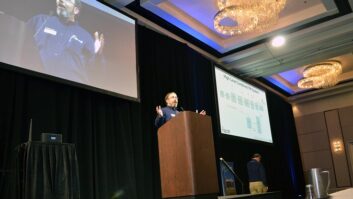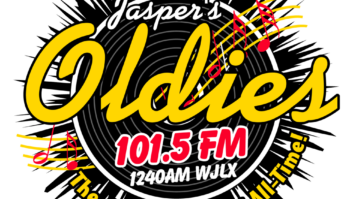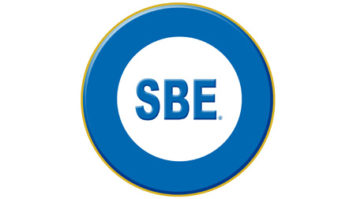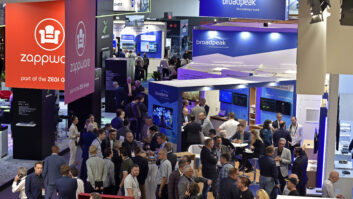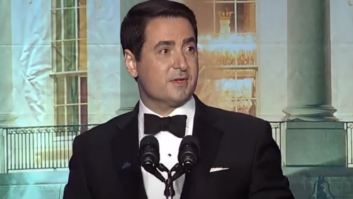
Credit: Randy Thompson, K5ZD
The WRTC2014 organizing committee set up test stations during the summer 2013 IARU HF Championship. All stations consist of the same models of tower, tent, antennas and generator. The World Radiosport Team Championship returns this summer to the United States after 18 years.
This global gathering — an Olympic-style competition between the world’s elite amateur radio contesters — is back on home soil for 2014. The event, scheduled for July 8–14, promises to light up the ionosphere above Massachusetts.
What is radiosport? It’s the competitive use of amateur radio.
The championships are part of an ongoing cycle.
Almost every weekend, amateur radio operators put their stations on the air and compete against their fellow operators in a spirit of sport, good will and technical competency. The goal of these contests is to make as many contacts with other amateur radio stations as possible.
HISTORY & METHODOLOGY
Randy Thompson is one of the championship organizers. A former competitor, he’s been to five of the six previous WRTC events held around the world.
“The original one was in Seattle,” he said in a phone interview. “I missed that one. Then the next one was in San Francisco, then we went to Slovenia, then to Finland, then we went to Brazil, then it went to Russia. And now it’s here.”
The World Radiosport Team Championship is held every four years and runs concurrently with another large amateur radio contest, the International Amateur Radio Union’s HF Championship.
“It’s a big project.” Thompson said. “If it was any further apart, it wouldn’t be special. If it was any closer together, it would be too much.”
Several other major contests are held annually in the years between WRTC events. Operators who accumulate the highest scores, in various regions, are invited to become team captains. Captains choose a teammate, and both bring their skills to the championship.

Credit: Douglas Scribner, K1ZO
Each station will feature two operators and a referee.
RULES OF ENGAGEMENT
“We have invited 59 teams of two people to participate,” Thompson said. “We have a referee for each team to serve as an on-site observer. To keep the sporting aspect as equal as possible, we are providing each team with the same tower, antennas, tent and a generator and a field that’s relatively level.”
In total, there will be 65 identical stations; the extras are available for the competitors’ use in the event of a problem with one of the set-ups.
The idea is to eliminate as many variables as possible. The only thing that will separate these teams, as they race for top honor, is operator skill. However, Thompson says, competitors are allowed to bring some of their own equipment.
“They get to use radios they’re used to; they get to use their computer logging software. They can use whatever kind of crazy switching and automation stuff they want.”
YL AND YOUTH COMPETITORS
The 2014 competition will have two female (YL in amateur radio parlance) operators competing alongside returning champions, and against a team of young operators who are just starting to make their mark in amateur radio contesting. Thompson says having an all-female team isn’t unique to this year’s contest, as the Brazilian organizers had invited a “YL” team to participate in a previous competition.
“[In 2014] two German ladies qualified through the standard qualifying process,” Thompson said. “We didn’t set aside a space for them.”
However, this year’s organizers did reserve a special spot in an effort to appeal to a new generation of amateur radio operators.

Credit: Randy Thompson, K5ZD
Volunteers will construct 65 temporary stations in fields in an area of Massachusetts about 75 miles wide prior to the WRTC2014 contest.
“What we did this time is set aside one place for a youth team that will be manned by operators who are both under 25 years old,” Thompson said.
SPECTATOR SPORT
Thompson and his fellow organizers are interested in sharing the hobby of amateur radio with as wide an audience as possible. They want this event to connect with fellow contestants and the broader group of amateur radio operators, but they have a goal beyond enthusiasts of their own hobby.
“We want to use WRTC as a platform to promote ham radio to the general public.”
Thompson recognizes that this could be difficult, since there are many technologies available that compete with radio. And, he says, amateur radio contesting has another challenge to overcome.
“Ham radio contesting is not the world’s greatest spectator sport,” he said.
To respond to that problem, this year’s organizers are going to be incorporating new features that will raise the visibility of the contest, and its participants, using their website, www.wrtc2014.org.
“We are going to capture the score off the logging computers of all the competitors that are operating, transmit it up in real time, so we will have an online scoreboard that is showing how everyone is doing,” he said. “So we really will be able to watch this almost like a car race or a marathon.”

Credit: Randy Thompson, K5ZD
An amateur radio operator tests the station setup during the 2013 IARU HF Championship contest.
HUMAN RESOURCES
Thompson says the 2014 organizers have had great support from amateur radio contest clubs and equipment manufacturers and are close to reaching their fundraising goals to meet the event’s budget. But they still need some support in one other key area.
“The biggest thing we need now is human resources,” he said. “Anybody who is willing to come in and help us with two or three days of set-up, and then the one day of take-down.”
Even without competing, Thompson says, volunteers will be winning by helping make the event successful for the competitors. They will also help amateur radio shine during one of its best public relations moments. And, he says, there’s no substitute for the camaraderie.
“They’ll get a chance to spend some time with these really good operators that are coming in.” He said the social aspect is one of the highlights of the competition. “When it’s all said and done, and you look back, the competition and winning and everything isn’t nearly as valuable as just getting to meet all these people that you’ve talked to a million times, and you never get to see.”
Christopher Friesen wrote about spy “numbers stations” in January.





